Joanne Rogers
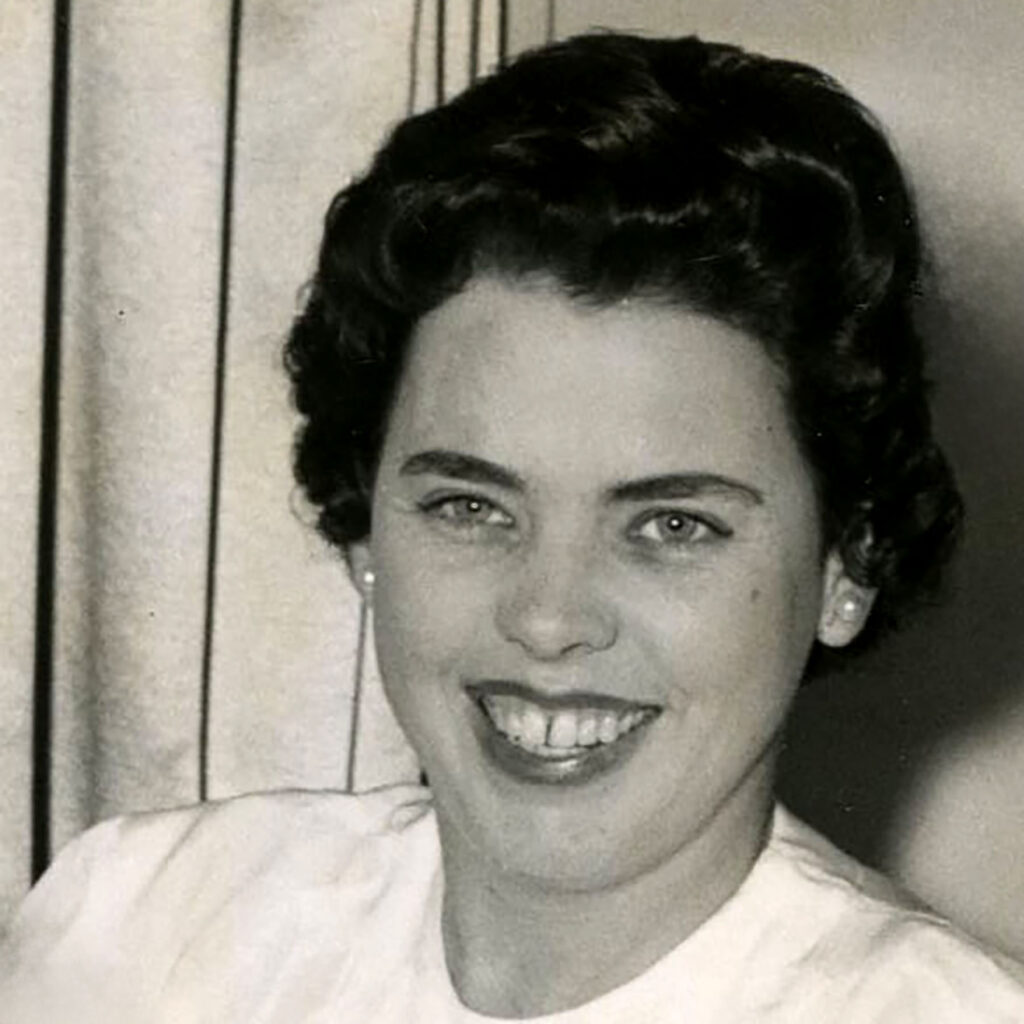
People invariably say, ‘Well, I can’t do that, but I sure do admire him. I would love to do it.’ Well, you can do it. I’m convinced there are lots of Fred Rogerses out there.— Joanne Rogers
Our December 2023 Legendary Widow Role Model, Joanne Rogers, was born Sara Joanne Byrd in Jacksonville, Florida in 1928. She began playing the piano before she could recite the alphabet. Her talent for the instrument earned her a scholarship to study piano at Rollins College in Florida, where she met her future husband, Fred Rogers, later host of television’s “Mister Rogers’ Neighborhood.”
Joanne earned a Master’s Degree in music from Florida State University while Fred headed to New York for an apprenticeship at NBC Television studios. The two communicated by letter for several years until Fred asked in a letter for Joanne’s hand in marriage.
The couple married in 1952. Joanne raised their two sons, James and John, while continuing her career as a concert pianist and helping with Fred’s television productions. Joanne provided voices for several of the inanimate objects in the attic on “The Children’s Corner,” Fred’s first television show. She helped answer fan mail, was a frequent show guest, and provided the voice for Queen Sara Saturday, the puppet queen on “Mister Rogers’ Neighborhood.”
When Fred passed away in 2003, Joanne helped carry on his legacy and their shared commitment to supporting children and families. She worked tirelessly to ensure that the beloved TV host wasn’t forgotten after his death. She wanted him to be remembered not as a shiny idol but as the genuine man that she loved.
Joanne served as Chair Emeritus of the Board of Fred Rogers Productions and as honorary chair of the Fred Rogers Center for Early Learning and Children’s Media. She attended the unveiling of Fred’s commemorative U.S. Postal Service stamp and celebrated the 50th anniversary of “Mister Rogers’ Neighborhood” in 2018. That same year, she appeared in the documentary “Won’t You Be My Neighbor?” about her husband’s show.
Joanne was honored by the Children’s Museum of Pittsburgh with the Great Friend of Children Award in 2016, and in 2019, at age 91, she attended the premiere of the film “A Beautiful Day in the Neighborhood” starring Tom Hanks as her husband. Joanne passed away in 2021.
Marian Shields Robinson
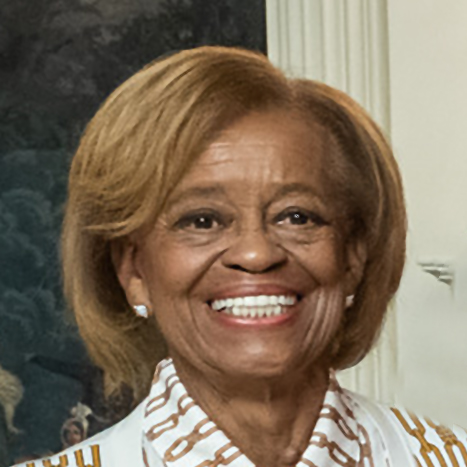
If I can't do it fast, I'm not doing it. You don't run just to be running — you run to win.— Marian Shields Robinson
Our November 2023 Legendary Widow Role Model, Marian Shields Robinson, was born in Chicago in July of 1937 as one of seven children to her father Purnell, a painter and carpenter, and her mother Rebecca, a licensed practical nurse.
In 1960, Marian Lois Shields married Fraser C. Robinson III, a pump worker for the City of Chicago. They raised two children who both become graduates of Ivy League schools. Their son is college basketball coach Craig Robinson, and their daughter Michelle married United States President Barack Obama.
Marian and Fraser scrimped to provide for their children, even putting up walls in the living room of their four-room home so Michelle and Craig could have bedrooms. Once the children were in high school, Marian took a job as a bank secretary and kept that position until she retired.
Fraser died in 1991 after a long battle with multiple sclerosis. Michelle Obama’s first book, Becoming, describes her close relationship with both Fraser and Marian.
In her widowhood, Mrs. Robinson continued her work, though retirement may have come sooner than she’d planned, prompted by her move to Washington, DC in 2008 when her son-in-law was elected President of the United States. Suddenly the modest mother-in-law of Barack Obama took on a very visible role as “Grandmother in Chief” with active daily participation in her granddaughters’ lives. Having their only grandparent in the household was a way that she could help to keep their lives normal and provide a stabilizing presence in the midst of the whirlwind of political life, Marian said when interviewed by BET, Oprah Winfrey, and national newspapers.
Marian started running in her 50s and became a gold medalist in both the 50-meter and 100-meter races in the 1997 Illinois Senior Olympics, but gave up running after an injury. With her competitive nature, she lost interest if she wasn’t winning, she has said.
Marian, a private person, has resumed a quiet life in Chicago, and her granddaughters are now on their own. However, the Obama Presidential Center is expected to raise her profile again when it opens in 2025, as the exhibit “Opening the White House” will be named in her honor.
Helen Fabela Chavez

I want to see justice for the farmworkers. I was a farmworker and I know what it is like to work in the fields.— Helen Fabela Chavez
Our October 2023 Legendary Widow Role Model is Helen Fabela Chavez, widow of Cesar Chavez. Among numerous other accomplishments, Helen picketed alongside her husband in the farm labor movement in the United States, was arrested in strikes, ran a thriving business, and raised the couple’s eight children.
Helen was quiet and humble but fiercely determined and strong-willed in the face of unrelenting obstacles and steep odds.
Born on January 21, 1928 in Brawley, California, Helen grew up in the Central Valley of California. She dropped out of high school to support her family by working in the fields. She met her future husband, Cesar, while they were both laboring as farm workers in the mid-1940s. Helen and Cesar married in 1948.
In 1962, Cesar began building what eventually became the United Farm Workers (UFW). Helen went back to work in the fields to help support the family while her husband travelled California’s Central Valley recruiting farm workers. She earned $5 a week plus food and housing.
When the Delano Grape Strike began in 1965, Helen took over management of the Farm Workers Credit Union, which had been established in 1963 as a part of the larger movement led by her husband Cesar and Dolores Huerta, co-founder of the UFW. Helen maintained a home life, joined vineyard picket lines before dawn, and then worked all day at the Farm Workers Credit Union. She ran the credit union for more than 25 years before retiring.
Helen was widowed when Cesar passed away in 1993. She stayed out of the public eye for most of her remaining years. A year after Cesar died, Helen accepted the Medal of Freedom, the highest American honor for civilians, from President Bill Clinton on Cesar’s behalf. In 2003, she gave an interview when the United States Post Office released a stamp commemorating her husband. In 2012, she met President Barack Obama at a dedication for a national monument to Cesar in Keene, where the Cesar Chavez Foundation is located.
Helen passed away in 2016 at age 88. Upon her death, her family released a statement saying Cesar could not have led the farmworker’s labor movement without his wife’s support.
Licoricia of Winchester
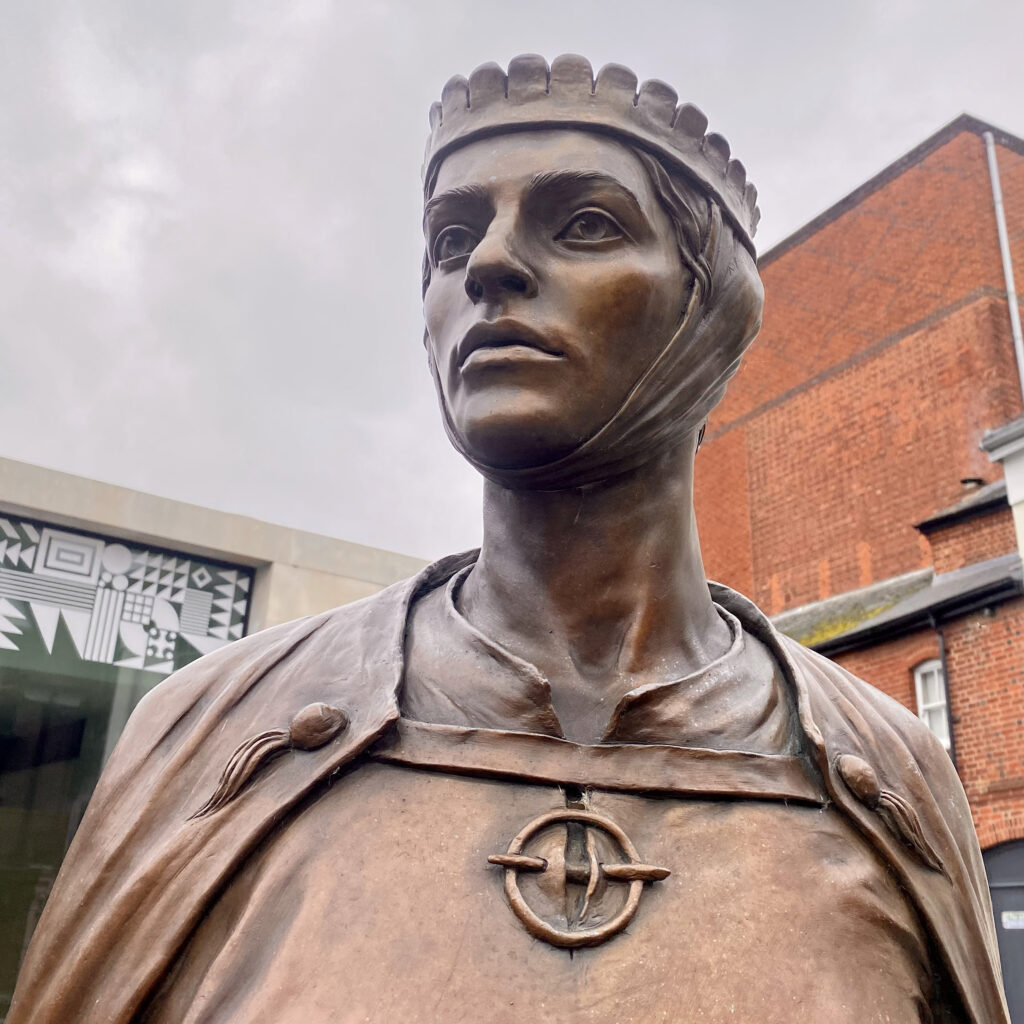
She has real resonance for today. She was a woman in a man’s world, an ethnic minority at a time of great racism and prejudice and persecution. – From Simon Sebag Montefiore, Historian— Licoricia of Winchester
Licoricia of Winchester, our September 2023 Legendary Widow Role Model, was a Jewish moneylender and wealthy banker who counted royalty among those who borrowed from her. She rose from obscurity to become the most successful female financier in early 13th century England.
Moneylending was the quickest way to wealth for the Jewish population in 13th century England. But antisemitic kings tolerated them only for their tax payments. One biographer compares these taxes to extortion of Jewish people, and draws a parallel to later centuries when profits from enslaved people were used to construct England’s institutions.
The life of Licoricia includes a scandal when her future husband petitioned the church and the government for a divorce from his then-wife in order to marry Licoricia. And her story, though not typical, can be a window into the life of Jewish families in Medieval England, through extensive records that point to the eventual expulsion of Jews from the country.
Licoricia first appears in records in 1234 as a young widow with four children. Her financing activities are documented from the early 1230s. She was one of approximately 1% of the Jewish population working at the highest level of financial dealing.
In 1242 Licoricia married her second husband, David of Oxford. Upon David’s death in 1244, Licoricia was imprisoned in the Tower of London as surety for royal tax collection on David’s estate. The tax on her family was so extensive that it was nearly enough to pay for construction of a chapel at Westminster Abbey.
Over the next 30 years, Licoricia became a highly influential businesswoman, traveling extensively as she managed her assets. Her clients were spread throughout southern and southwestern England and included other Jewish people, local landowners, and small farmers, as well as King Henry III and his wife Queen Eleanor of Provence, members of the aristocracy, and the Church.
Twice-widowed, with four children, Licoricia was successful in a medieval English world that penalized her gender and religion. She was well-known in her city and throughout the international Jewish community, and her business dealings are easily researched because of her unusual name.
In early 1277, Licoricia was found dead inside her home on Jewry Street, likely the victim of a botched robbery attempt. Three men were indicted for her murder, but none was convicted, and the case was never solved.
In February 2022, more than 700 years after her unsolved murder, King Charles (then Prince Charles) unveiled a six-foot tall statue commemorating Licoricia and her son Asher near her former home in the city of Winchester in Hampshire, England.
Recent biographies and websites have celebrated Licoricia’s courage and resilience as well as her business acumen and financial success as “the richest woman in England.”
Joyce Carol Oates
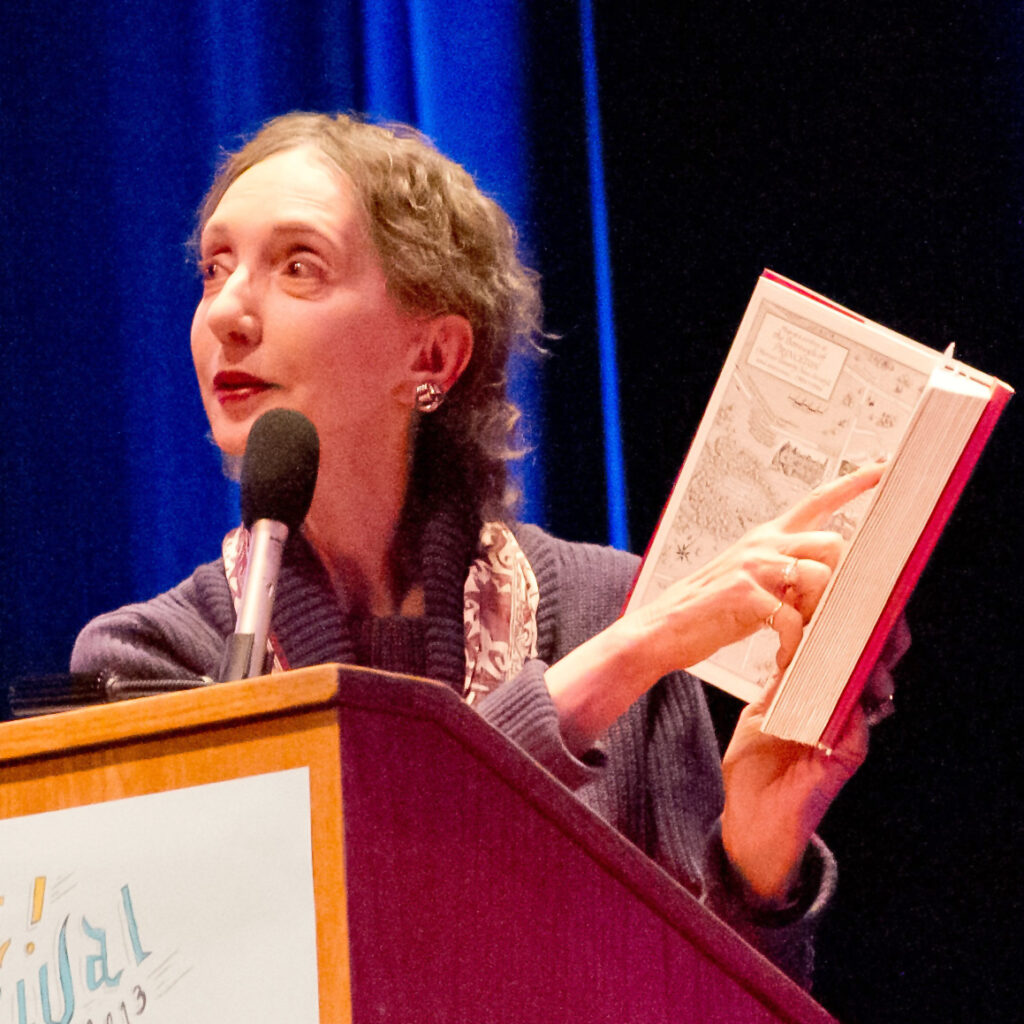
One writes to memorialize, and to bring to life again that which has been lost.— Joyce Carol Oates
Joyce Carol Oates, our August 2023 Legendary Widow Role Model, is an educator and award-winning author who has written poetry, plays, criticism, nonfiction, 11 novellas, thousands of short stories, and more than 60 novels.
Over the course of her career, Oates has received hundreds of writing, literary, and lifetime achievement nominations, awards, prizes, and medals. Five of her works have been finalists for the Pulitzer Prize for Fiction.
Born in Lockport, New York in 1938, Oates began writing at the age of 14, ultimately publishing her first book in 1963. She was the first in her family to graduate from high school. She attended Syracuse University in New York, graduating as valedictorian in 1960 with a B.A. She received her M.A. from the University of Wisconsin–Madison.
Oates met Raymond J. Smith at the University of Wisconsin–Madison; they married in 1961. Smith became a professor of 18th-century literature and, later, an editor and publisher. Oates founded the Canadian literary magazine The Ontario Review in 1974 in partnership with Smith. In 1980, Oates and Smith founded Ontario Review Books, an independent publishing house. Oates has described their relationship as very collaborative and imaginative, a marriage of like minds.
After 47 years of marriage, Smith died of complications from pneumonia on February 18, 2008. In 2011, Oates published A Widow’s Story, a memoir about her extreme distress in the months following Smith’s death and her attempt to understand life without the partnership that sustained her for nearly five decades.
After 6 months of near-suicidal grieving for Smith, Oates met Charles Gross, a professor at Princeton. In early 2009, Oates and Gross were married. On April 13, 2019, Oates shared that Gross had died at the age of 83. In 2021, Oates dedicated her novel Breathe to Gross.
Since 2016, Oates has been a visiting professor at the University of California, Berkeley, where she teaches short fiction.
Iris Apfel
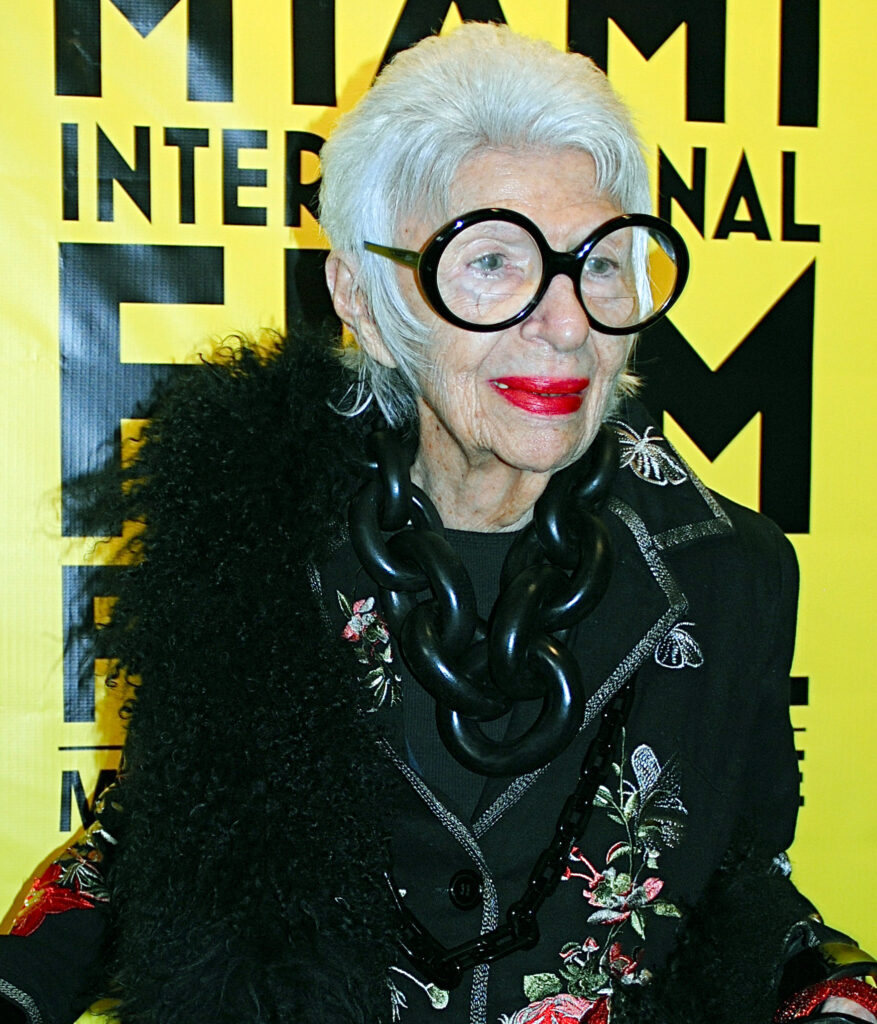
Life is a celebration! There is definitely no road map. Embrace its glamour. Enjoy its mystery. Be open to the unexpected.— Iris Apfel
Our July 2023 Legendary Widow Role Model, Iris Barrel Apfel, is a dynamic American businesswoman in the worlds of fashion, textiles, and interior design. Born in 1921 in Queens, New York, Iris celebrated her 101st birthday in August 2022.
After studying art education at the University of Wisconsin, Iris returned to New York where she wrote for Women’s Wear Daily. In 1948, Iris married Carl Apfel. In 1950, they launched the textile firm Old World Weavers, specializing in fabric reproductions from the 17th, 18th, and 19th centuries. Iris and Carl ran the firm together until they retired in 1992.
Iris and Carl traveled the world in search of textiles, and during this time Iris collected non-Western, artisanal clothes. In 2005 The Costume Institute at the Metropolitan Museum of Art staged Rara Avis (Rare Bird), an exhibit of her clothing and accessories.
During her career, Iris participated in a variety of design restoration projects, including working with the White House over nine U.S. presidential administrations.
In 2011, at the age of 90, Iris became a visiting professor in the Division of Textiles and Apparel at the University of Texas at Austin, and collaborated on a collection with MAC Cosmetics. In 2013, Iris was listed as one of the “Best-Dressed over 50” by The Guardian.
She stars in the documentary “Iris,” which premiered at the New York Film Festival in 2014. The movie highlights her colorful outfits, mixing high couture with thrift store chic and whimsical accessories such as beaded slippers or her signature oversized black frames glasses.
Carl Apfel died on August 1, 2015, at age 100. The couple had been married 67 years. In her biography Iris Apfel: Accidental Icon, published in 2018, Iris noted that she and Carl had a wonderful relationship, and that the long time they had together sometimes felt like a century, sometimes like a nanosecond.
In 2016, Iris performed in a television commercial for French car manufacturer Citroën and was the face of Australian clothing brand Blue Illusion. That same year, she was awarded the Women’s Entrepreneurship Day (WED) Pioneer Award for her work in fashion.
In 2018, Mattel created an Iris Apfel Barbie doll, making her the oldest person to ever have a Barbie created in her image. In 2019, at the age of 97, Iris signed a modeling contract with global agency IMG.
Today, at almost 102 years of age, Iris continues to consult and lecture about style and other fashion topics.
Una Vincenzo, Lady Troubridge
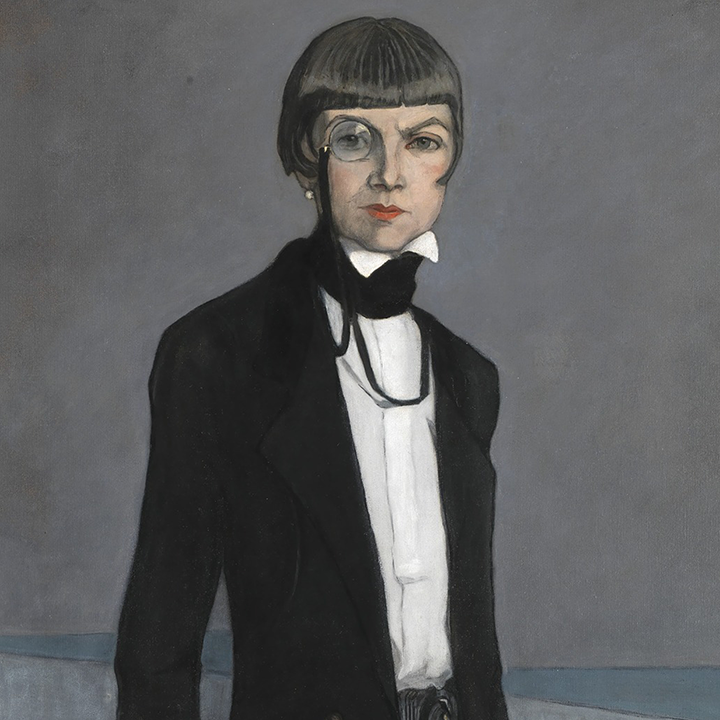
[Una Vincenzo was a] deeply consequential figure in 20th-century LGBTQIA+ history. – The Harry Ransom Center— Una Vincenzo, Lady Troubridge
Our June 2023 Legendary Widow Role Model is Una Vincenzo, a British sculptor and translator born Margot Elena Gertrude Taylor in 1887. Nicknamed Una by her family when she was a child, she chose the middle name Vincenzo herself, after her Italian relatives.
Una was brought up in London in an upper middle-class family and was a pupil at the Royal College of Art. She set up a sculpture studio after graduation, but when her father died in 1907 she married Ernest Troubridge, having few options for financial support.
Una and Ernest had one daughter, Andrea. Ernest rose to the rank of admiral during the First World War, and Una gained the title “Lady Troubridge” when he was knighted in June 1919, though by that time they had separated.
Una was well-educated and fluent in several languages. A successful translator, she introduced the French writer Colette to English readers. She was a devoted admirer of the Italian-Russian operatic bass Nicola Rossi-Lemeni and followed his career all over the world. She later became a close friend to both Rossi-Lemeni and his wife, the soprano Virginia Zeani, and was godmother to their young son.
In 1915, Lady Troubridge met and fell in love with author and poet Radclyffe Hall, the partner of her cousin Mabel Batten. Batten died in 1916, and Troubridge and Hall moved in together the following year. They both identified as “inverts,” a term used by turn-of-the-century sexologists that classified same-sex attraction as a form of gender variance.
Hall, who often went by the name John, published the novel The Well of Loneliness in 1928; it was subsequently banned in England for its description of lesbianism. The book, along with manuscripts, photographs, and diaries from Troubridge and Hall, is part of a collection of more than 61,000 items digitized by the University of Texas at Austin to offer insight into the two LGBTQIA+ pioneers and the impact of censorship on gender identity.
The couple remained together until Hall died of cancer in 1943. Single for the remaining 20 years of her life, Troubridge is the author of 1945 biography The Life and Death of Radclyffe Hall. She passed away in Rome in 1963 at age 76.
Florence Finch
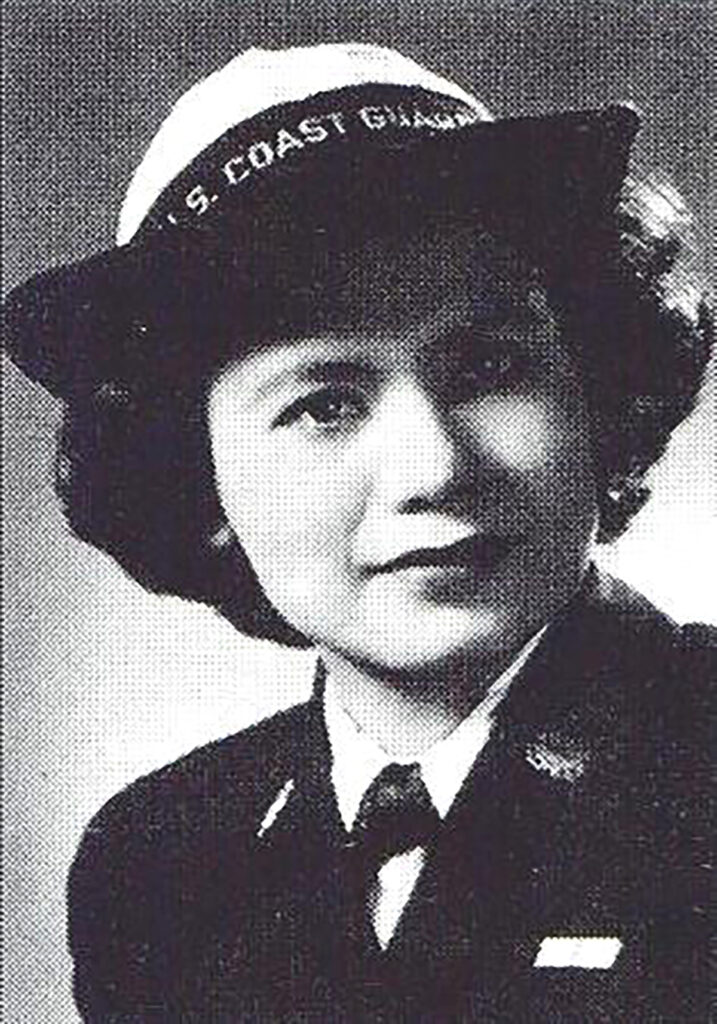
I feel very humble because my activities in the war effort were trivial compared with those of the people who gave their lives for their country.— Florence Finch
Florence Ebersole Smith Finch, born October 11, 1915, was a Filipino-American member of the World War II resistance against the Japanese occupation of the Philippines.
After graduating high school, Finch went to work for the U.S. Army in Manila. While there, she met her first husband, an American sailor named Charles Smith. They married in August 1941. Charles was killed in action in the Philippines in 1942.
After the Japanese attack on Pearl Harbor, Finch disguised her American connections and was given a job at a Japanese-controlled company. Working closely with the Philippine Resistance Movement, she was able to divert supplies to the resistance and assist in facilitating acts of sabotage against the Japanese occupation forces.
In October 1944, Finch was discovered to be working with the resistance. Arrested and tortured, she never talked. She was sentenced to three years of hard labor in a prison outside Manila.
When Finch was liberated by American forces on February 10, 1945, she weighed just 80 pounds. In May 1945, not wishing to remain in her native country, she moved to Buffalo, New York, where she joined the U.S. Coast Guard Women’s Reserve to, as she noted, “avenge the death of my husband.”
In September 1945, Finch became the first, and only, woman in the Coast Guard to be awarded the Asiatic-Pacific campaign ribbon authorized by President Truman.
While visiting friends in late 1945, Florence met a handsome Army sergeant, Bob Finch, who was soon discharged. Florence completed her Coast Guard service in May 1946. Bob and Florence married in October 1946.
In 1947, Finch was awarded the Presidential Medal of Freedom, the highest civilian award in the U.S. It recognizes those individuals who have made “an especially meritorious contribution to the security or national interests of the United States, world peace, cultural or other significant public or private endeavors.” She was also awarded the Asiatic–Pacific Campaign Ribbon, the first woman to be so decorated.
Florence and Bob began their family with a daughter, soon adding a son. Happy and challenged in their work and family, they moved to Ithaca, NY. Life dramatically changed in 1968 when Bob died of a heart attack at age 53.
Florence raised her children and worked as a secretary at Cornell University until 1981, when she retired at age 65.
In 1995, the Coast Guard named a building on Sand Island in Hawaii in her honor, and in 2019, the Coast Guard announced its intention to name their Fast Response Cutter (FRC 57) for “Seaman First Class Florence Finch.”
Florence Finch died at age 101 on December 8, 2016, in Ithaca, New York and was buried with full military honors in April 2017.
Dr. Edith Eger

We don’t get to choose what happens to us, but we do get to choose how we respond to our experience.— Dr. Edith Eger
Our April 2023 Legendary Widow Role Model is Dr. Edith Eger, an eminent psychologist specializing in the treatment of post-traumatic stress disorder. Her experiences as a Holocaust survivor have helped her treat patients and allow them to escape the prisons of their own minds to find freedom and life fulfillment.
Edith was 16 when the Nazis transported her Hungarian Jewish family to Auschwitz. Her parents were sent to the gas chamber by Joseph Mengele. Edith and her sister were transferred to the Mauthausen and Gunskirchen camps in Austria. Conditions in Gunskirchen were so bad that Edith had to eat grass to survive.
American troops liberated the camps in 1945, and the sisters recovered in an American field hospital where Edith met her future husband, Béla (Albert) Eger, also a Holocaust survivor. Béla had joined the partisans during the war. In 1949, after threats from communists, Edith and Béla fled to the United States with their first child. The couple went on to have two more children. Béla passed away in 1993.
In 1978, Dr. Eger received her PhD in Clinical Psychology. She combines her clinical knowledge and her own experiences with trauma to help others. Choosing to forgive her captors and find joy in her life every day, she has counseled veterans suffering from PTSD, women who were abused, and many others who learn that they too, can choose to forgive, find resilience, and move forward.
In 2017 Dr. Eger wrote a memoir, The Choice: Embrace the Possible, which weaves her personal story with case studies from her work as a psychologist. Her patients’ stories show how people can choose to find freedom, regardless of circumstance.
In The Gift: Twelve Lessons to Save Your Life, published in 2020, Dr. Eger offers practical, uplifting advice about how to recognize and stop destructive, self-sabotaging patterns to find greater life fulfillment.
In September 2022, Edith Eger turned 95. Her message remains important and powerful: “Though I could have remained a permanent victim — scarred by what was beyond my control — I made the choice to heal. Early on, I realized that true freedom can only be found by forgiving, letting go, and moving on.”
Helena Znaniecki Lopata

Studying widowhood is not easy. People become widowed in several ways, and there are numerous influences on the consequences of this process.— Helena Znaniecki Lopata
Sociologist, educator, and author Helena Znaniecki Lopata was most renowned for her research on women homemakers, receiving acclaim for her 1971 book Occupation: Housewife. When she was later challenged to write about aging, her research led to two groundbreaking books, Widowhood in an American City (1973) and Women as Widows: Support Systems (1979).
Born October 1, 1925, in Poznan, Poland, Helena and her American-born mother fled to the United States when Germany invaded. After graduating high school, Helena received a PhD in sociology from the University of Chicago and was a professor at Loyola University in Chicago until her retirement in 1997.
In 1946, after marrying business consultant Richard Lopata, she moved to suburbia to be a housewife and new mother. She said her mother advised her to “study where you are,” so she studied the housewives she met and based Occupation: Housewife on that research.
Role theory dominated Helena’s research, approaching the study of widowhood in terms of role loss – the ending of stable patterns of interactions and shared activity. She linked role loss and identity change, and examined the personal resources used by women in adapting to widowhood. Her final book, Current Widowhood: Myths and Realities, was written two years after her own widowhood. She acknowledged the importance of widowhood research in helping to eliminate the stereotype of the limited, suffering, and dependent widow, noting that the real image of widowhood is much more complicated and varied.
In 1994, Helena’s husband of 50 years passed away. When asked which aspects of her own widowhood had most surprised her, she said, “the extent and breadth of the emotions and sentiments in the process.”
During her career, Helena was elected to the presidencies of several organizations, published 20 books and numerous articles, and received many awards and honors.
Helena died in Wisconsin at age 77 on February 12, 2003.
MWC LEGACY AWARD
MWC Legacy Award is given to one extraordinary person annually who goes above and beyond in serving to empower widows and their families around the world. They are of the highest excellence who possess the highest levels of virtue, nobility, humbleness, compassion, fortitude and the epitome of heroic leadership.

